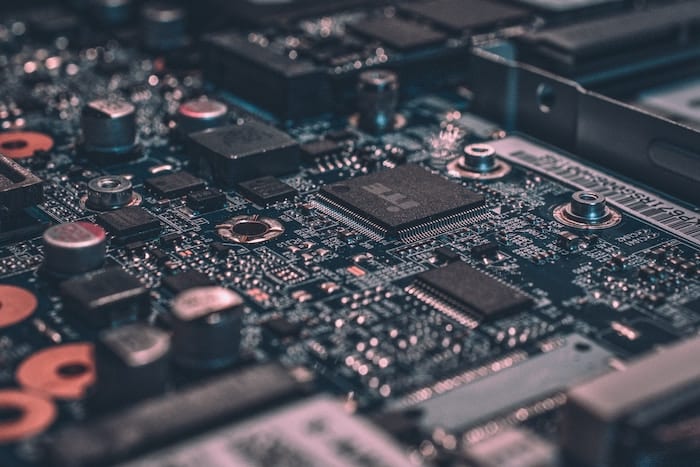Your company’s network hardware holds important digital information and data that the future of your business depends on. Especially now that ransomware is used to hold companies hostage against hefty fines, shouldn’t protecting it be a prime concern? The right approach to security will help your business minimize the risk of a major data security breach.
Staying up to date on the best security practices for all of your active equipment is certainly important, but you might not be aware that old equipment that’s no longer in use could potentially cause a breach in your data security.
Before jumping into the article, feel free to reach out to one of our reps about how we can help with disposal and resale.
Don’t Waste Money: Dispose Properly
Failing to properly dispose of storage hardware can lead to your data center perpetually wasting money. Simply put, old hard drives most likely have data that’s confidential to both your company and customers. The right process for dealing with those old hard drives makes all of the difference.
Many organizations fail to correctly dispose of their decommissioned data center equipment. Exposing any employee or customer information can lead to expense fines, and otherwise storing the unused equipment can end up costing your company thousands of dollars per year.
Costs for storing old drives that could otherwise be replaced or refunded can cost upwards of $50,000 per year. And the longer they sit, the greater the risk of failing to meet data protection laws; which means a higher likelihood of getting fined or experiencing a serious data breach.

Is Your Data Really Secure?
Even if your company believes it handles its old hard drives correctly, they may not be as secure as you think. Furthermore, it’s imperative that certain regulations are met in the future, like the current European Union’s General Data Protection Regulation (GDPR) and the digital privacy law that will go into effect in California in the year 2020.
However with technology changing at such a rapid rate, it’s not necessarily surprising that data center operators are playing catch up with the right disposal procedures.
Chances are you’re also backing up your data somewhere offsite or in the cloud. Which adds even more to the list of proper storage and disposal.
But with an increasing number of individual’s data stored across hardware devices, it’s more important than ever for companies to ensure that information is safeguarded and protected. That starts with following effective data retention policies and disposal procedures.
Poor Practices Lead to Wasted Efforts
Think about what the top priorities of any data center might be:
- Efficiency
- Privacy
- Data security
- Compliance
Yet, so many companies that handle a large amount of data practice inefficient processes to dispose of old or unneeded data and properly cleaning hard drives for disposal or even reuse. Furthermore, even less companies practice any form of data auditing to ensure erasures are permanent.

There are remote, automated tools available that are great for secure data erasure. But surprisingly, it’s common practice for data center operators to erase data manually.
A process that entails individual removal of drives from their servers and the servers from their racks. Many organizations erase the data manually once removed, but they then usually store the drives in house per compliance needs. This takes up valuable data center space unnecessarily
Good Intentions
Storing old drives on site might seem like a safe bet. But that sort of practice is basically equivalent to hoarding old computer parts that can dramatically drive up the costs of operation. You never receive any value for equipment that’s otherwise not in use.
Even if your company performs erasures on the drives, odds are the tools available to you were simple downloads or general process sweeps. These aren’t always thorough enough.
Physical Destruction Might Not Be Enough Either
Unless your data center is under Google Cloud or Microsoft Azure, odds are you’re not using the types of shredders that can completely destroy and dispose of old drives. Furthermore, physical destruction makes documentation difficult; i.e. no audit trail, which could spell trouble in the future.
Additionally, many organizations don’t destroy their disks properly. With data recovery consistently advancing, even SSDs that you think are destroyed could still pose a threat.
Is Encryption the Answer?
A growing practice among industries that handle a large amount of data is cryptographic erasure. Cryptographic erasure is exactly what it sounds like: encrypting drives and cryptographically erasing them by deleting the key.
And though it’s a relatively simple and fast process, it’s not entirely safe. A data leak could still occur if encryption has not been constantly turned on on a particular device. The loss of encryption keys could also affect data recovery. This adds more responsibility to your general operations through proper encryption key management.

Verify Erasures with a Third Party
So, what are your options? One safe, fool-proof method is to enlist the help of a third party company to help you dispose of and erase any hard drives with important data on them.
Performing these tasks alone can be very difficult otherwise. The technology for data and memory recovery is simply too good these days.
And a security breach might not just be expensive to your company’s budget and reputation. A major breach can pose the risk of a complete shutdown that would require a full-on data center recovery.
Put the Right Processes in Place
Many IT organizations have basic policies and practices around erasure and disposal of old equipment that’s housing valuable data. You may be surprised by how outdated, expensive, inefficient, etc. these procedures are.
However, they’re not a bad place to start. When you’re ready to decommission systems, it’s good to make sure to have the proper decommission checklist added to your general operations plans.
But as technology continues to advance and the complexity of storage systems grows in the way in which they can store information through multiple layers of persistent cache as well as more advanced encryption, you’ll need to enlist the help of an IT asset disposition company.
An ITAD company will not only help you erase and dispose of equipment in the right way, but will ensure that you receive the maximum value in exchange for your used hardware equipment. Plus, the process of bringing on a third party creates a clean audit trail for your records. Saving you time, money, and helping to ease any worries about a potential data security breach.
Enlist the Help of exIT Technologies
The security measures you take when disposing of old hardware are going to vary based on your company and data center’s features. Some of these features include size, location, the type of storage hardware you’re using, and even your industry and the type of data you’re storing.
However, general security, decommission and disposal best practices are going to remain fairly constant. You can adopt your own plans and strategies to fit your needs, but the important thing is taking an active role in the safety of vulnerable company, partner, and client data.
Which is why enlisting the help of a truly experienced ITAD company makes all of the difference in avoiding a data security breach. And as a leader in IT Asset Disposition, exIT Technologies can help.
Contact us today for a free asset valuation and service quote.



